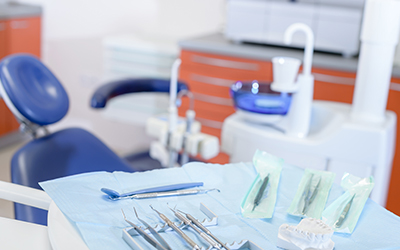Posted on Oct 13, 2025
File ID 25059791 | © Candybox Images | Dreamstime.com

When a tooth is damaged by decay or a fracture, you may hear your dentist mention inlays or onlays as treatment options. But what exactly are they? And when are they better than fillings or crowns? This overview explains these advanced restorations, why they are used, how the process works, and what you should ask your dentist.
An inlay is a custom indirect restoration that fits within the cusps (raised edges) of a tooth, replacing a portion of the tooth's biting surface. An onlay extends over one or more cusps and may cover more of the chewing surface, sometimes acting almost like a partial crown. These restorations are often crafted in a dental lab from durable materials such as porcelain or composite resin.
Compared to traditional fillings, inlays and onlays are stronger, longer lasting, and more resistant to recurring decay. They preserve more of the natural tooth structure than a full crown, yet provide more protection than a simple filling.
Your dentist might suggest an inlay or onlay when:
· A cavity is too large for a simple filling but not extensive enough to require a full crown
· A tooth has a crack or fracture in a region best covered partially
· You want a more aesthetic and durable solution than a metal or composite filling
· You have had recurrent decay under a filling and want a more robust restoration
Inlays and onlays often fall under the classification of indirect restorations. They’re sometimes viewed as an intermediate option between fillings and crowns, giving dentists flexibility in treating moderate damage.
Here is a typical workflow for an inlay or onlay procedure:
1. Diagnosis and Preparation – The dentist examines the tooth (often with digital X-rays) to determine the extent of damage.
2. Tooth Shaping – Decay or old filling material is removed, and the cavity is shaped to receive the restoration.
3. Impression or Digital Scan – A mold or 3D digital scan of the prepared tooth is taken and sent to a lab.
4. Temporary Restoration – A temporary filling or cover protects the tooth during the lab phase.
5. Lab Fabrication – A certified lab creates the custom inlay or onlay from material such as porcelain or ceramic.
6. Final Placement – Once ready, the dentist removes the temporary, checks the fit, and cements or bonds the restoration in place.
7. Polishing and Adjustment – The dentist polishes and fine-tunes the bite for comfort and function.
The whole process typically requires two visits: preparation and final placement.
Some advantages of inlays and onlays include:
· Better strength and durability than standard fillings
· Preservation of more natural tooth structure compared to full crowns
· Less risk of shrinkage or microleakage (which can lead to decay)
· Excellent aesthetics when made of tooth-colored materials
· Long lifespan: many last 10–20 years or more with good care
To extend longevity, maintain good oral hygiene, frequent checkups, and avoid hard, brittle foods. These techniques help protect against dental decay around the margins.
Here’s how these treatments compare:
|
Option |
Tooth Coverage |
Invasiveness |
Durability |
Ideal For |
|
Filling |
Within cusps |
Least invasive |
Moderate (5–10 yrs) |
Small to medium cavities |
|
Inlay / Onlay |
Within or over cusps |
Moderate |
High (10–20+ yrs) |
Moderate damage without full crown |
|
Crown |
Entire tooth surface |
Most invasive |
Very high |
Extensive damage or weakened tooth |
When discussing inlays or onlays with your dentist, consider asking:
· What material do you recommend and why?
· How long is the expected lifespan of this restoration?
· Will my dental insurance cover this treatment?
· If my filling fails again, is a crown my only alternative?
· How will this treatment affect neighboring teeth?
· What aftercare or maintenance is required?
If you are actively searching for a dental office that works with Medicaid, it’s helpful to ask whether they are a dentist near me that accept Medicaid for your treatment. Some patients also seek a provider who can handle urgent issues, such as needing an emergency dentist near me in Lake Charles or combining inlays with broader restorative work such as dental implants in Lake Charles in case of tooth loss.
At Duhon Family Dentistry, we aim to guide patients through advanced and minimally invasive restorations while accommodating varying dental insurance situations. We understand that selecting a dentist near me that accept Medicaid is an important concern for many. Our team offers comprehensive restorative options like crowns, bridges, implants, and inlay/onlay solutions, and we are committed to helping patients understand what to expect every step of the way.
If you’ve been told you need a large filling or crown, but want to explore a more conservative option, schedule a consultation to see whether an inlay or onlay might be right for you.